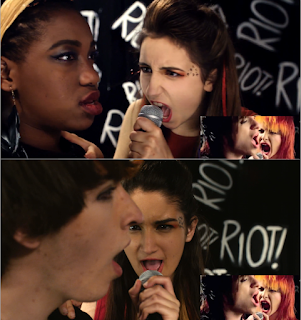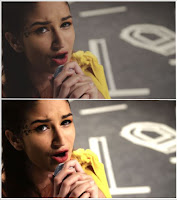 |
| Our director of photography: Jack |
 |
| Our director: Dom |
 |
| I was able to learn the fundamentals of a variety of tasks |
 |
| Our performance coach: Jasmine |
I enjoyed the entirety of the shoot day, but I have to admit that the performance was much more enjoyable than I had expected at the start of the project. However, it was still very useful to balance the time performing with technical work, as well as time spent talking to the staff and runners.
Not everyone in our class felt comfortable with the performance, but thankfully all of us in our group were very committed, which resulted in some footage which looked brilliant in the final edit:














